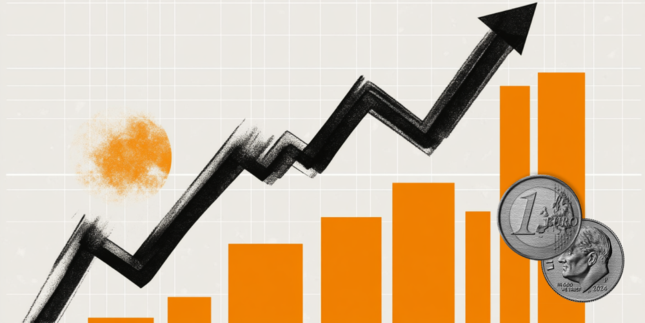WTI hovers near $70.00, downside appears amid potential exports from Kurdistan’s oilfields
- WTI price may decline due to expectations of resumed exports from Kurdistan’s oilfields.
- Iraq’s Oil Ministry confirmed plans to export 185,000 barrels per day from Kurdistan’s oilfields through the Iraq-Turkey pipeline.
- Russian and US teams are set to meet this week to discuss ways to strengthen bilateral relations.
West Texas Intermediate (WTI) Oil price edges higher to around $70.30 per barrel during Asian trading hours on Monday. However, crude Oil prices faced downward pressure amid expectations of resumed exports from Kurdistan’s Oilfields.
On Sunday, Reuters reported that an Iraqi Oil ministry official confirmed Iraq’s plan to export 185,000 barrels per day (bpd) from Kurdistan’s Oilfields via the Iraq-Turkey pipeline. The ministry stated that all necessary procedures had been completed to facilitate the resumption of exports through the pipeline.
Meanwhile, traders remain focused on developments related to the ongoing conflict between Russia and Ukraine, which enters its fourth year on Monday. European Union leaders are expected to convene for an extraordinary summit on March 6 to discuss additional support for Ukraine and European security assurances.
Additionally, a senior Russian diplomat indicated that Russian and US teams plan to meet this week to explore ways to improve bilateral relations. This follows US President Donald Trump’s initiative to engage Russia in talks aimed at ending the war, though notably without the involvement of Ukraine or the European Union.
Investors are also closely watching potential developments on US trade policy. Further tariff-related announcements from President Trump could heighten global trade tensions, exerting additional downward pressure on crude Oil prices. On Friday, Trump signed a memorandum directing the Committee on Foreign Investment in the United States (CFIUS) to restrict Chinese investments in strategic sectors.
Finally, market participants will be paying close attention to the release of the Personal Consumption Expenditures (PCE) index on Friday — the Federal Reserve’s (Fed) preferred measure of inflation — which could provide further insights into the central bank’s future interest rate policy.
WTI Oil FAQs
WTI Oil is a type of Crude Oil sold on international markets. The WTI stands for West Texas Intermediate, one of three major types including Brent and Dubai Crude. WTI is also referred to as “light” and “sweet” because of its relatively low gravity and sulfur content respectively. It is considered a high quality Oil that is easily refined. It is sourced in the United States and distributed via the Cushing hub, which is considered “The Pipeline Crossroads of the World”. It is a benchmark for the Oil market and WTI price is frequently quoted in the media.
Like all assets, supply and demand are the key drivers of WTI Oil price. As such, global growth can be a driver of increased demand and vice versa for weak global growth. Political instability, wars, and sanctions can disrupt supply and impact prices. The decisions of OPEC, a group of major Oil-producing countries, is another key driver of price. The value of the US Dollar influences the price of WTI Crude Oil, since Oil is predominantly traded in US Dollars, thus a weaker US Dollar can make Oil more affordable and vice versa.
The weekly Oil inventory reports published by the American Petroleum Institute (API) and the Energy Information Agency (EIA) impact the price of WTI Oil. Changes in inventories reflect fluctuating supply and demand. If the data shows a drop in inventories it can indicate increased demand, pushing up Oil price. Higher inventories can reflect increased supply, pushing down prices. API’s report is published every Tuesday and EIA’s the day after. Their results are usually similar, falling within 1% of each other 75% of the time. The EIA data is considered more reliable, since it is a government agency.
OPEC (Organization of the Petroleum Exporting Countries) is a group of 12 Oil-producing nations who collectively decide production quotas for member countries at twice-yearly meetings. Their decisions often impact WTI Oil prices. When OPEC decides to lower quotas, it can tighten supply, pushing up Oil prices. When OPEC increases production, it has the opposite effect. OPEC+ refers to an expanded group that includes ten extra non-OPEC members, the most notable of which is Russia.
Forex News
Keep up with the financial markets, know what's happening and what is affecting the markets with our latest market updates. Analyze market movers, trends and build your trading strategies accordingly.
























